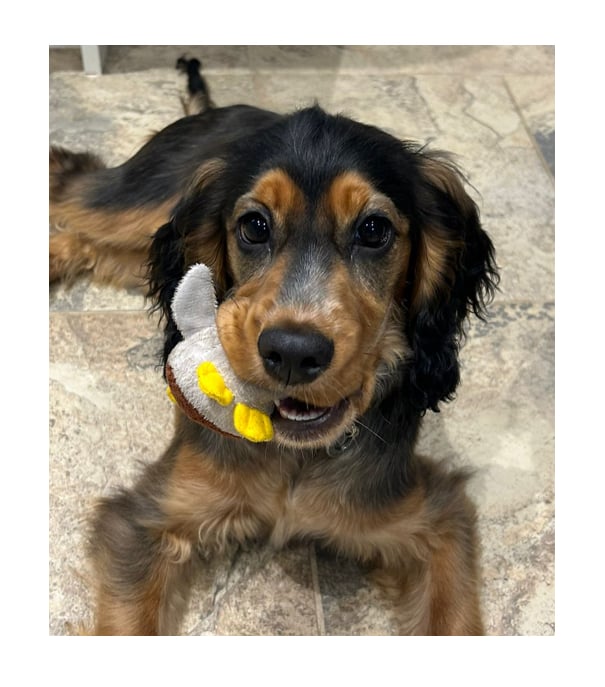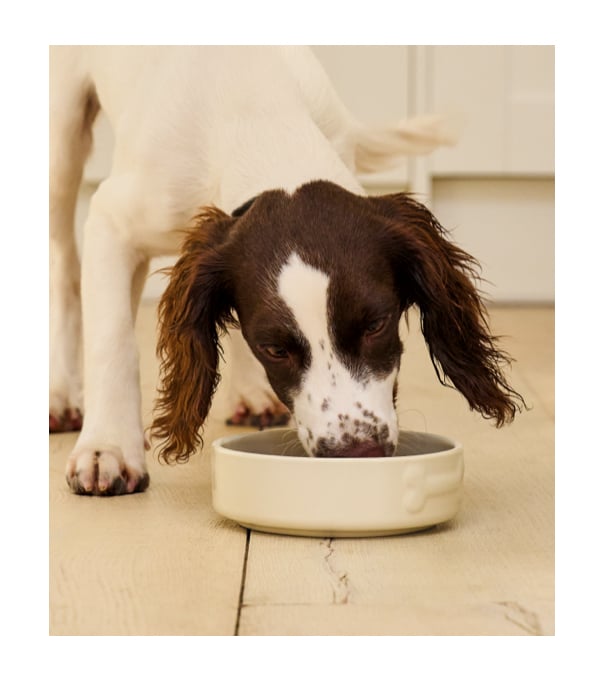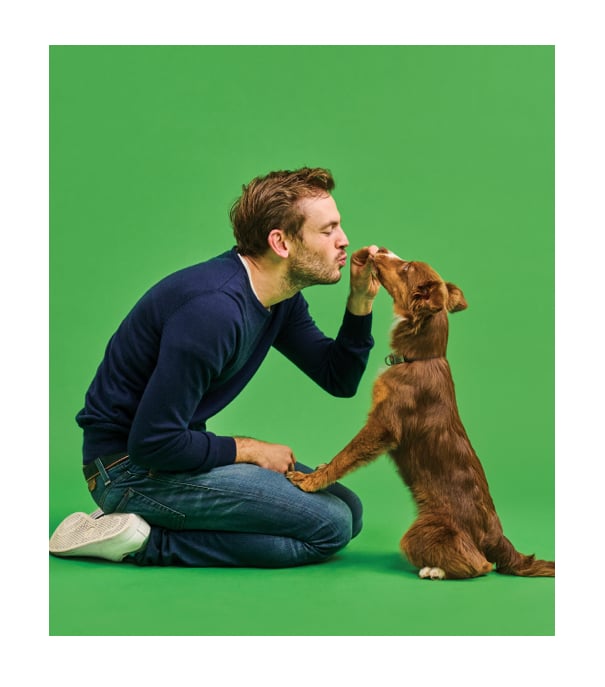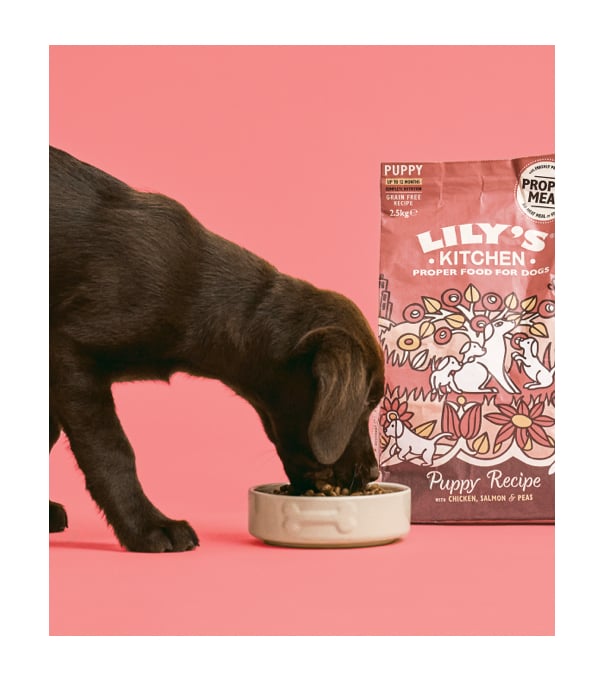How much to feed your puppy


Hello, new bundle of fluff! This guide is for all puppy parents just beginning their journey of pet parenthood. To get your little friend well set up, it’s important to carefully consider their diet. Nutrition is essential for growth and development, and factors such as age, breed and size all play an important part in determining the food most suited to them. Here, Rory the Vet covers the most searched puppy queries, including ‘how much food should I feed my puppy?’, ‘how can I tell if my puppy is underweight?’ and ‘How do I transition my puppy from puppy food to dog food?’.
MEET RORY THE VET

We’ve partnered up with animal whisperer and renowned veterinarian, Dr Rory Cowlam, to share his wisdom when it comes to all things furry. And boy, does this man know his stuff.
Starting with his degree from the Royal Veterinary College, Rory has since co-starred in the CBBC’s series The Pet Factor, shared his knowledge on the likes of Blue Peter and written all about it in his book, Secret Life of a Vet.
Follow him on Instagram
How much food does a puppy need?
Puppies have specific dietary needs that depends on their breed, size, energy levels and if they have any medical requirements. The goal is to keep your pup healthy and avoid them growing too fast and becoming obese. Ultimately, we feed puppies based on their expected growth rates. For example, a labrador will weigh more at maturity than, for instance, a Dachshund. Which means the labrador will need to eat more food as a puppy.
Take a look at Lily’s Kitchen’s handy guide for further information. Please note that guidelines are estimations. They cannot detail your dog’s individual needs. You may want to ask your breeder or vet to help you come up with the best feeding plan for your dog.


Wet vs dry dog food for puppies
I recommend that dog parents feed their puppy a mixture of wet and dry dog food. That way, you can experience the benefits of both (wet can seem to be the tastier of the two, but dry is usually a little cheaper and packs a nice crunch) and your furry friend can explore a variety of textures. But ultimately, all that matters is if it contains complete and balanced nutrition. As long as it does, then you can’t go wrong with either. It’s also essential that you feed your new family member puppy specific meals, as they have been specially formulated to aid growth and development.
How to transition from puppy food to adult dog food
Before making the transition, speak to your vet about when you should make the change to adult dog food. Some larger breed dogs should be eating puppy food for longer as they grow for an extended period compared to smaller dogs.
Rather than switching to an entirely different brand or product, I would recommend sticking with the same brand your puppy has been eating and simply switching to their adult formulation. Do so gradually, over 5-7 days, monitoring all the while.


Tips for feeding your puppy
To manage your pup’s diet in the most effective way possible, try the following:
• Keep on top of portion sizes by weighing their food, reviewing calories and considering their activity that day. A day of additional exercise burns additional calories which can mean your pup may require more food
• Split their meals into smaller portions throughout the day. I suggest 3 times a day until 6 months, and then twice a day after that
• Write down their feeding schedule to keep track. Keep on your fridge for easy access
• Add water to their food for digestibility. This can also help prevent hiccups
• Don’t over treat when training as they may not eat their food
Common questions about puppy feeding
Now that we’ve covered the basics, here are my answers for common puppy parent queries.


What if my puppy doesn’t finish their food?
I would get your puppy checked over by your vet to make sure there isn’t an underlying issue and that they are growing as they should. If your vet gives the all clear, then you’re likely over-feeding. Review their food intake, adjust and monitor.
Can I feed my puppy treats and what’s the right amount?
Yes, of course. Preferably puppy-specific treats as these will contain suitable ingredients and be the right size and chewability. Remember to take away the calorie value of the treats from your pup’s daily requirement of food! The packaging should state the amount recommended to feed your dog in a single day.
How can I tell if I’m feeding my puppy the right amount?
They should be growing well and have good energy levels. If they aren't or you still have concerns, then speak to your vet who will be able to determine this for you.


Can I give my puppy a mix of wet and dry food?
Absolutely. This is what I do with my pooch Nala as I think each food type has its own benefits!
How can I tell if my puppy is overweight or underweight?
Puppies should be growing a lot in their first few months. Regular weigh-ins are important to ensure yours is on the right track. Their body condition can be assessed easily from the comfort of your home by following this guideline.


Give your puppy a balanced, nutritious diet
I hope that answers your questions. For nourishing, tasty and balanced puppy food, look to Lily’s Kitchen, specially tailored recipes for little mouths. Approved by their nutritionist and their vet, they’re made with natural ingredients, including freshly prepared meat and offal, plus the required vitamins and minerals your growing pooch needs. Good luck on your furry journey – it's go-time.
The information in this article is intended as a guide to help pets and pet parents on their journey together. It is provided for educational and informational purposes only and is not meant as a substitute for professional advice from a vet, behaviourist, trainer or other professional. We encourage all pet parents to consult with their vet and/or behaviourist to ensure their pet’s specific needs are met.
Published on 07/02/2025
